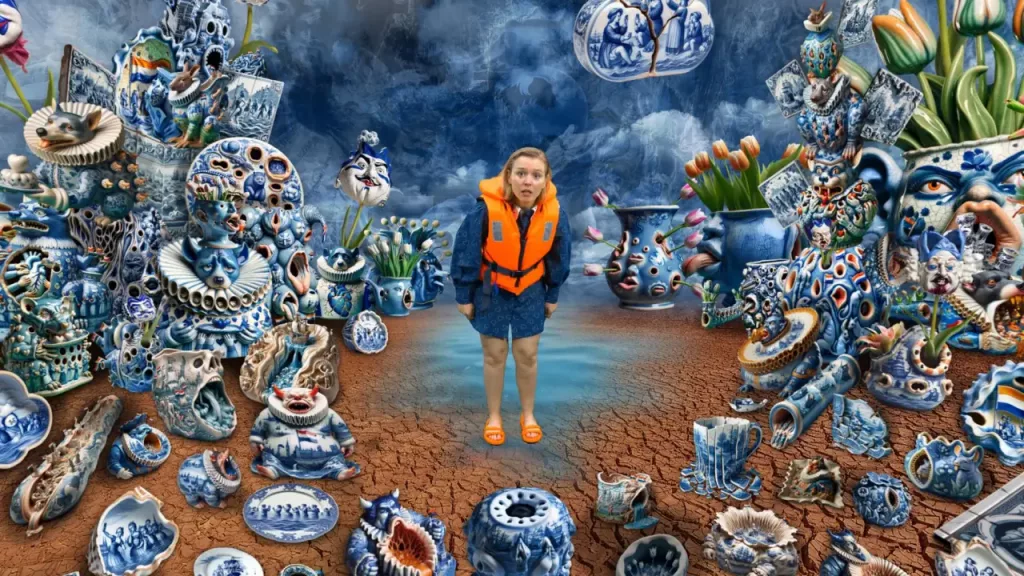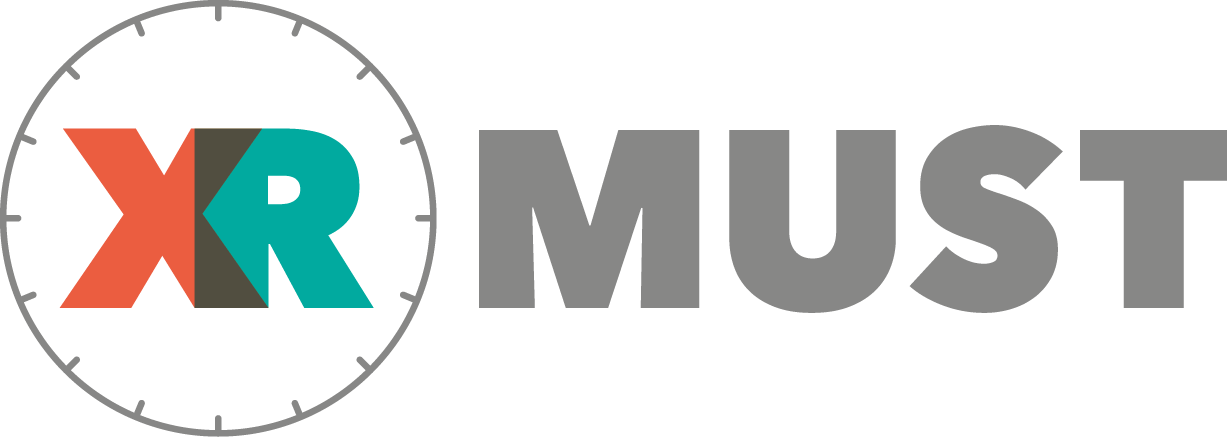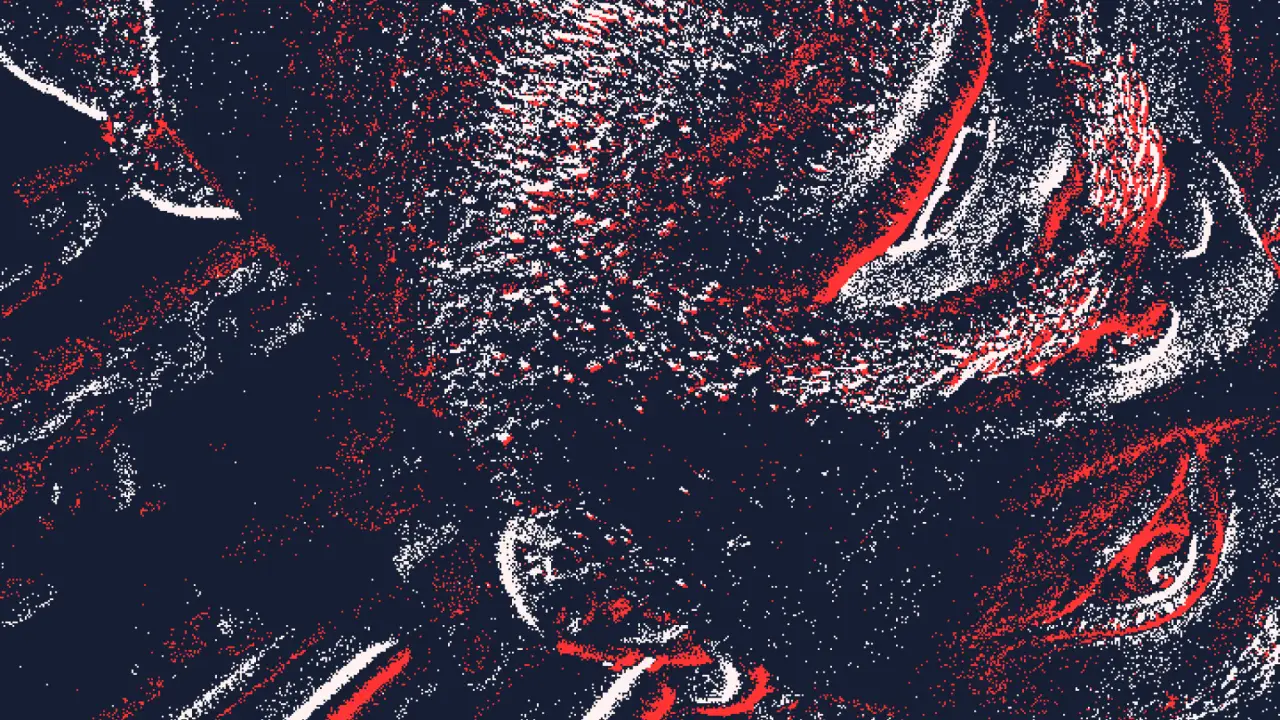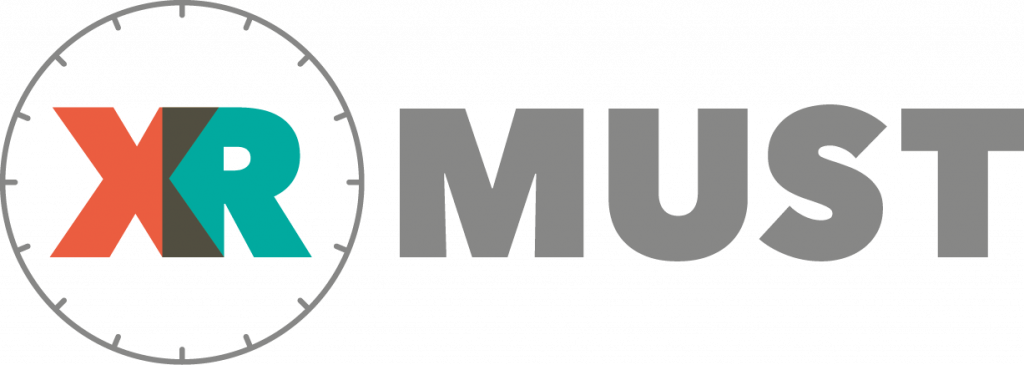The DOK Neuland XR exhibition and DOK Exchange conference, taking place as part of DOK Leipzig (27 October – 2 November), explore the realities and future of XR. DOK Neuland, curated by Dana Melaver, is a public showcase of XR projects, performances and workshops and DOK Exchange XR, curated and coordinated by Weronika M. Lewandowska, is an industry programme, with critical discussions, a prototyping zone and development showcase.
We spoke to them about their respective programmes and how they are intertwined and complement each other.
Cover: BLINDSPOT, by Justin Urbach
DOK Leipzig 2025, a collaborative programme
W.L. – The themes for DOK Neuland and DOK Exchange are different, but also somehow connected. We’ve always collaborated, and this year we collaborated more.
D.M. – We’re interested in similar things, have similar visions for what a sustainable XR community looks like. We come together, but we arrive at similar intersections from different roads.
Immaterial [the 2025 DOK Neuland theme] is something that was percolating, and then as the projects came in, it just made more and more sense.
W.L. – Our themes are integrated in the idea to bring a bigger picture to what is happening right now in XR. It was very crucial that Dana was part of our pre-selection process for XR in development, the showcase and the prototyping zone. We were in dialogue about it. One of our past projects in the prototyping zone, REVIVAL ROADSHOW, is presented this year at Neuland. We see it can be good to find new projects at the prototyping stage which could be interesting to curators,

I am also focused in the DOK Exchange XR program on digital literacy and next generation of creators and audiences, how this audience will develop and how we can support young creators to develop critical skills in a time when fiction and reality blurs.
Our inner discussion is also visible in our podcast episode – where Dana is a guest with Prodromos Tsiavos from the Onassis Foundation – where we share similar thoughts about what is important in ethical design and that we take care of the next generation in our programs.
A future for XR?
In the Neuland program, you’re looking at environmental impact, impact on our bodies and impact from the power structures. Our conversations in the industry about the future and sustainability of XR are often about how we distribute, not as often about what is actually the sustainability of this form in the ecological, digital or human way. You touch upon a layer that implicit in developing this industry.
D.M. – I do have the sense that in general, and not just in the sector, the conversation about climate change and sustainability is kind of going out of fashion, which is weird to me since we’ve done nothing. There is a lot of talk about progress and how new technologies will save the world, but actually, there is a different impact that’s happening as well. I would also add that it’s not just questions of environment and sustainability, but also labor practices that are involved in building and shaping our tools and training the software that we end up using in all these different medias.
One of the things that excites me the most about projects submitted through the open call is a feeling that the artist understands the medium, that there’s an intimacy with a tool that goes beyond just the medium being used to tell a story, but rather, how are we in dialog with this technology? That means understanding that impact as well. Obviously, we’re not saying let’s throw out our technologies, but I think it is important to consider them. There is a lot of gratuitous use of AI. Any decision we make is fine, as long as we’re aware that this decision has consequences as well. What we’re trying to say in revealing this as part of the exhibition is, look, there is a cost to this as well, and we are aware of it.

W.L. -. I can find this sustainability in our program in this panel we have about Building a Future for XR and the Immersive Arts with the British Council. We can support XR in a way where we know it will be distributed, it will be visible, it will be part of exhibitions, of education, of really different programs. That means that XR is not something that we hide in our digital archive and it disappears. This collaboration is about thinking about the future of distribution, because if the work is created and uses a lot of energy and it’s not visible, it’s not really good.
How we really support creators and producers in the industry is part of the sustainability of XR, but also how we think about exhibitions – artists are moving towards more hybrid storytelling and exhibitions, more scaleable options. We are open to the idea that we have different versions, different iterations of our onboarding and offboarding. I have seen that artists are really thinking about this, not only as a technical setup, but also this emotional, physical integration of the room. We invited Marcel van Brakel to the conference, who is going to explain how he is working, how to make this way of thinking and creation more ethical.
D.M. – The entire core of XR is that it’s flexible. When we’re talking about immersive arts and media arts, it’s difficult to say exactly what this is, it’s always expanding and it’s all a connected genre, connected medium, connected industry, connected sector. And if this can be so flexible in definition, why are we not flexible in form?
It can be a file that we just send to an art space and they can load it onto a headset and create their own environment. Or it can be this whole immersive environment that’s being created. It can have so many different forms and so many different budgets, and it can all relate to a single piece. That’s something that you can’t really say about a painting. You can change its environment, or you can juxtapose it in a different way, but this is completely a curatorial decision. But it’s not the painting itself that’s changing.
Non-fiction narratives
Both of you in your respective programs talk about power structures and cultural narratives – how do you see that manifesting in the conversations or in the artworks that you have selected?
W.L. – We collect new knowledge, new experiences from XR. It’s really about embodiment, so it resonates inside our body and our memory; the installation is also a part of this process. We have to be more aware of that, because it’s about power. The theme Politics of memory came from a VR piece from Poland which was used by our former government for propaganda, distributed in schools with the aim to really shape the attitudes and feelings and future political choices. It was actually made for adults, but it was used in schools, and it was psychologically brutal. There was lack of understanding how it’s crucial to build this onboarding, digital literacy, critical thinking, some knowledge about embodiments – about how we can protect or actually design for kids. Rūta Kazlauskaitė will share her experience on politics of memory and what is very crucial, how VR can be used as a propaganda tool and what’s the role of visual culture and new technology. It’s important that we think not only about VR as an empathy machine, but also see the opposite possibility that it can bring bad consequences and can manipulate us.

D.M. – The word power is actually applicable to all the projects in different ways. One would be the power to shape our reality in various degrees. We have DOWNFALL OF THE VIRTUAL HUMAN, by Jimmy Yu from South Korea. It talks about reproducing patriarchal mindsets, approaches and realities into digital space. We see this in our devices, how unjust systems are being replicated through biases and programming or just the general discourse of the online space. Or THE DOLLHOUSE, by Charlotte Bruneau and Dominic Desjardins, looking at the power dynamics between a person and domestic workers and abuse of these power relations.
But we also see power in the medium itself: even in a 360 VR film, where the audience is free to look in any way, the director is still suggesting the perspective and pathway of viewing …that is a power dynamic, and an uneven one.
We’re also trying to visualize the invisible, these power structures, or the fibers of world building in different degrees. For the exhibition design, we’re working with architect Louis Weber, and getting the materials from Materialbuffet, an association in Leipzig that is taking materials from conferences and reusing them in different contexts, which is great and makes it more financially sustainable. And of course, we’re working with a big fleet of volunteers. It’s an unpaid labor force, and they’re working as our mediators, helping people try VR for the first time. This is also a power structure.
Speaking of structures, how your programmes sit in relation to the larger DOK Leipzig ecosystem?
D.M. – DOK Neuland is a section of the broader film programme, but we do have collaborations with the film programme department. There is a general openness to new ideas, new ways of thinking. I hope more filmmakers for traditional formats will come to the exhibition, because I know they are very interested and open to new formats, and here they can learn about the possibilities.
What is nice is that we have projects from really different spaces coming in. One project is from studies – ANOTHER PLACE by Domenico Singha Pedroli, who graduated from Le Fresnoy but he’s also emerging within the XR community. BLINDSPOT by Justin Urbach, which is a video sculpture…he’s coming from fine arts, but is getting into the XR sector. Also from fine arts is Sybil Montet, with GEOMANCY. This piece was presented for the first time as an online experience, as a generative film made for web, and then it was installed as a video installation, but not generative. Here, for the first time, it’s a two-channel generative film connected to 40 different data points regarding weather patterns around the world. That affects how the film is being live-edited. It’s a 10-minute loop, but it keeps changing depending on the weather around the world. We also have FOR IRON I KEEP GOLD, which is from Keke Opata, who is a digital fashion designer and 3D artist.
Some projects are more maximalist, like GEOMANCY, and then some are really minimalist, like VOLUME by Niklas Poweleit, which is just one action within a 360 film that degenerates from photorealism into abstraction, and you’re just along for the ride.

W.L. – At DOK Exchange, we are very open to everyone who is coming to gain new knowledge about possibilities behind new technologies. And not only for XR creators, but also for traditional movie creators, animators… For example, we have one project at the showcase [THE MERMAID EFFECT] which is using traditional clay animation in XR. We would like to build this kind of bridge between creators of different disciplines.
I think we both share this approach of discovering new talents and really giving them space to show their projects. But also, it’s really important for me to reflect the changes in shifts we’re experiencing. We have a panel on accessibility in game design with one creator from traditional, interactive games for flat screens, and another one is an XR creator, bringing movement to games and really physical, embodied, spatial experiences. They will have a conversation comparing practices and try to learn from each other.
This year, we also have the online showcase, which is a collaborative brainstorming mentoring session for our showcase creators. We had a meeting with online experts to give the feedback on the pitches so our projects can improve their presentations before they come to Leipzig. We want to help creators to improve this important part of the development process, because they are presenting to find new financial support.
There are some things that we’ve taken from the 2D sector and brought it into XR, which is really helpful – modes of development, creation, distribution, financing. But then it’s also important for us to think as an industry in which ways we’re not traditional filmmaking, and what is not a one size fits all.
It’s great that we are embedded within a film festival. It gives the sort of infrastructure that’s really useful for XR creation. But at the same time, it’s important to find the ways in which we’re different… and we’re lucky at DOK Leipzig to have the freedom to do that.

DOK Leipzig x CPH:DOX
You have a new partnership with CPH:DOX, specifically the Lab, and it’s very fitting because I think both of your programmes have very similar outlooks in terms of curatorial approach, issues and themes that you seem to be revolving around.
D.M. – Both of our festivals are part of the Documentary Alliance Network, so we’ve had a long-standing relationship. But now we’re deepening our relationship within XR, doing extra conversations and extra activities just within the XR sector.
W.L.- We’ll exchange on some benefits for creators. So we will give some accreditation at the awards at CPH:Lab, but also we will bring one prototype from their lab to our 2026 edition. D
But we have a lot of new collaborations this year. We also have our first networking party, as one of the industry get togethers for the festival.
D.M. – Our main host for that is SEE NL. We have a country-in-focus for the Netherlands this year. Embassy of the Kingdom of Netherlands is supporting one of our exhibit projects, REVIVAL ROADSHOW, which has its own contained installation with the Museum of Fine Arts. And SEE NL (with ASIFA Germany and ITFS) is supporting the industry get together, where we’ll also have a special live musical activation of BLINDSPOT by musical duo Aqua Veen. Because DOK Neuland is a free public exhibition, we’ll have a certain limited capacity at the event for the public as well.
DOK Neuland is a free public exhibition and the DOK Exchange XR Industry programme is accessible with the festival accreditation and a two-day DOK Exchange Conference Pass. More information is available at www.dok-leipzig.de.



Leave a Reply
You must be logged in to post a comment.